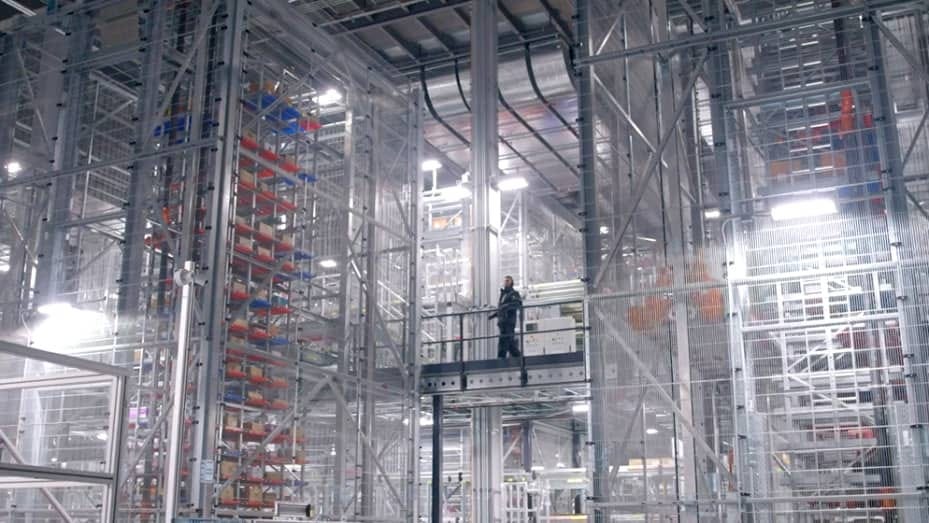This Week in Retail
7.22.24
Hey Friends,
While last week may have been dominated by the “technical difficulties” experienced seemingly worldwide and the “blue screen of death” caused by Microsoft and Crowdstrike, there was no shortage of news in the world of retail. Prime Day results are in, and of course, another record year for Amazon. Shoppers spent $14.2 billion on July 16 and July 17 across various e-commerce sites, up 11% from last year, according to Adobe Analytics data. Mobile shopping drove almost half (49.2%) of that, reaching $7 billion — 18.6% more than last year. Some additional highlights below:
Consumer Behavior: This year, more consumers avoided big-ticket items and made fewer multiple purchases, according to Numerator data.
Steep Discounts: Discounts were significantly steeper than last year:
Electronics: 23% off (up from 14%)
Apparel: 20% off (up from 12%)
Home Goods & Furniture: 16% off (up from 9%)
Televisions: 16% off (up from 5%)
Computers: 11% off (up from 8%)
E-commerce Price Trends: Online prices have been declining for nearly two years, with a 4.2% drop year over year in June, according to the Adobe Digital Price Index. Adjusted for inflation, overall spending would be even higher.
Buy Now, Pay Later: Shoppers used BNPL for 7.6% of their online spending, totaling $1.08 billion, a 16.4% increase from last year.
On the Walmart front, some news coming from them on their latest partnership with Mr. Gatti’s pizza. 92 Walmart stores will get brand new Mr. Gatti's Pizza shops, specifically clustered around southern Walmart locations. The new pizza shops will be mostly in the following states:
Texas
Louisiana
Oklahoma
Kentucky
Installation of the shops is planned to begin shortly with the goal to have Mr. Gatti's corporate-owned pizza shops open and operational by the fourth quarter of 2024. The partnership affords Mr. Gatti's quite the expansion option; it has now doubled its presence across the U.S. to over 230 locations nationally.
Walmart is also setting its sights on automating their grocery supply chain to keep its advantage over other retailers. Following a press release from Walmart on this frontier, here’s what you need to know:
Locations and Purpose:
Five new centers in Shafter, CA; Lancaster, TX; Wellford, SC; Belvidere, IL; and Pilesgrove, NJ.
Automation aims to increase efficiency and expand capacity.
Automation Benefits:
Facilities average 700,000 square feet, using automation for chilled and frozen areas.
Automation helps store and retrieve perishable items, enhancing precision in inventory management.
Doubling storage capacity and processing more than twice the volume compared to traditional centers.
Operational Impact:
CEO Doug McMillon anticipates profits growing faster than sales due to automation and higher-margin businesses like advertising.
By 2026, about two-thirds of Walmart stores and 55% of fulfillment center volume will involve automation.
Unit cost averages are expected to improve by about 20%.
Technological Advancements:
Automated systems build customized pallets for stores, optimizing storage and retrieval processes.
Robotics help in stacking items to minimize damage, such as placing fragile items on top.
Economic Impact:
Capital expenditures projected at $22 billion for the year, up from the usual $12 billion.
Increased productivity expected without proportional increases in hiring.
Future workforce needs will shift towards roles like truck driving over warehouse floor positions.
Expansion and Retrofits:
Additional automation added to four traditional centers in Mankato, MN; Mebane, NC; Garrett, IN; and Shelbyville, TN.
Retrofitting of a legacy facility in Winter Haven, FL.
Impact on Workers:
Potential reduction in jobs at some facilities, but overall workforce expected to remain stable or grow.
Shift in roles from manual labor to supervisory positions due to automation.
Overall, Walmart's investment in automated distribution centers aims to improve efficiency, reduce costs, and better meet the growing demand for online grocery orders.
VF Corp. is selling the Supreme brand to Essilor Luxottica for $1.5 billion, according to a securities filing last week The deal is expected to close by the end of 2024. Supreme generated $538 million in revenue during VF’s latest fiscal year. The sale is anticipated to reduce VF’s earnings per share in its 2025 fiscal year. Supreme's declining sales and profits led VF to record large impairments. As a near-luxury brand sold mainly online, Supreme didn't align with VF's portfolio. VF Corp. has faced revenue declines for multiple quarters, prompting a transformation plan to boost the Vans brand and overall sales in North America, as well as a strategic asset review. The company has also hired new executives, including a new CFO and presidents for The North Face and Vans. The Supreme deal will enable VF to pay down debt and refocus its efforts.
Discount retail chain Big Lots is planning to close at least 35 stores this year amid falling sales and speculations that it may declare bankruptcy. The Ohio-based retailer, which has locations in 48 states, reported in a filing to the Securities and Exchange Commission (SEC) that it expected to close 35-40 stores this year while opening three new locations. The planned closures come as the total number of stores owned by the retailer has trended down in recent months, from 1,427 locations during the first quarter of last year to 1,392 outposts as of the same period this year. Last month, the retailer reported that it lost $205 million for the first quarter of this year, according to an earnings release.
And to finish, and interesting study came to my attention this week from PYMNTS oin the rise of the digital wallet. Digital wallets have transformed the payment landscape, offering an easy, contactless, and secure way to make purchases and transfer money via smartphones. Here's a snapshot of their impact and growth:
Key Highlights:
Fastest-Growing Payment Method: Digital wallets are the fastest-growing payment option in the U.S., especially among younger consumers. Most Americans now prefer them over traditional payment methods.
Increased Spending: Users of digital wallets tend to spend more than nonusers. This method is projected to surpass debit cards in transaction value for in-store payments in North America by 2027, according to a Worldpay report.
Convenience as a Driver: The primary reason for adoption is convenience, leading to greater usage and higher spending.
Merchant Adoption Challenges:
Lagging Behind: Less than 60% of small businesses currently accept digital wallets due to concerns about technology upgrades and perceived fraud risks.
Opportunity for Growth: Payment providers can help small merchants integrate digital wallets by addressing security concerns and simplifying implementation.
Expanding Digital Wallet Features:
Beyond Payments: Consumers are increasingly interested in using digital wallets for more than just payments. Features like account-to-account transfers, recurring payments, and document storage (e.g., driver's licenses, passports) are in demand.
High Interest Among Young and High-Income Users: Interest in additional features is particularly strong among Gen Z, millennials, and high-income earners.
Conclusion: The adoption of digital wallets is rapidly increasing due to their convenience and enhanced features. As consumer demand grows, it's crucial for businesses to integrate this payment method to stay competitive and meet evolving customer preferences.




